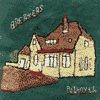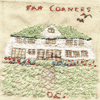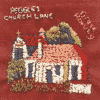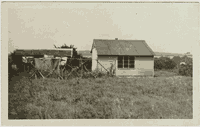|
| |
| . |
|
|
|
|



 |
HISTORY
This section of the website will build up in time as people send
in information and family archive photos - so if you have any contributions,
please send them in
Ferring History Group
Newsletters - to read or download, click
here |
|
|
| RESEARCH INTO FERRING FAMILIES, by
Joyce Cooper Latest News email from Joyce Cooper to the
residents of Ferring:
Can anyone who
feels that they can contribute to this fascinating work being done by Joyce
please contact her directly at
[email protected]
Hi Jennifer,
After the
Millennium "History Week" in Ferring, I decided to try to record as much
information as possible about Ferring Families. I had the Grave Registers,
F.A.D.S. archives, Ferring Conservation Group Members, Ilex Group members,
Ferring History Group members, the1901 Census, as well as permission from the
author of "Ferring Past" as a starting point.
Subsequently I
worked on the Kelly's Directories, Ferring School admission registers, St
Andrews Church Registers., etc., held at Chichester, and I ran a series of
Ferring Family History weeks over 4-5 years in Ferring Library, where people
could come and add their information or ask questions about family names.
I already had
lots of information from the Tapestries,
which you may remember I instigated. I included, where possible, photos of
people and houses. The earliest date was 1320.
This resulted in
58 volumes of spring clip A4 filess ! When I knew I was moving back up North, I
contacted Martin Hayes and asked if he would like them at Chichester. The "A"s &
"B"s which were already completed went to the Record Office at that point.
I am still
working on the rest & would be delighted to include any information available
via the web! Hope you can help - sorry this is a bit Wordy!
Joyce |



|
JIMMY THOMAS
Born James Thomas in Newport in 1874, he left school aged 12 and worked as an
errand boy for a chemist. At 15 he became an engine cleaner on the GWR. In 1892
he passed his firemans exams and began work at a colliery in the Sirhowy
Valley. Here, Thomas joined the Associated Society of Railway Servants,
eventually becoming a full-time organiser and remaining so when it became the
NUR. He was also involved in politics, joining the newly formed Labour Party and
was elected as a Councillor for Swindon.
In 1909 the Derby Trades Council became unhappy with the performance of Richard
Bell, an NUR-sponsored MP. He and the local Labour Party invited Thomas to be
the new candidate. He accepted and in his election address he called for an
increase in taxes on the rich and the abolition of the House of Lords. In the
1910 General Election Thomas received 10,239 votes, over 2,000 more than the
Conservative Party candidate.
While serving as an MP, Thomas retained his position in the union and even
helped to organise the strike of 1911. The following year he was an important
figure in the amalgamation of several unions to form the NUR. He was elected
General Secretary of the NUR in 1917 and two years later led a successful
railway strike. When Ramsay MacDonald became Prime Minister after the 1924
General Election, he appointed Thomas as Secretary of State for the Colonies. In
1929 Thomas became Lord Privy Seal in MacDonalds government. Thomas stood as a
National Labour candidate in Derby, won his seat in the 1931 General Election,
and afterwards served as Secretary for the Colonies.
Thomas held his government post until May 1936, when he was found guilty by a
Tribunal of Inquiry of leaking Budget secrets to his stockbroker son Leslie, to
Sir Alfred Butt, the Conservative Member of Parliament for Balham and Tooting,
and to Alfred Cosher Bates, a wealthy businessman. In a Judicial Tribunal,
Bates admitted giving Thomas £15,000 but tried to claim it was an advance for a
proposed autobiography. Thomas was forced to resign from the government and left
the House of Commons with his head bowed in shame.
Jimmy Thomas retired to his home, Millbury House, Ferring,, where he wrote his
autobiography, My Story (1937). He died on 21st January 1949. |
Please note:
This information was supplied anonymously and the accuracy of the contents
cannot be verified. FerringVillage.co.uk accepts no responsibility for the
content or accuracy of this article. |
| EXTRACT
FROM KELLY'S DIRECTORY, 1911
Hangleton is a hamlet
of this parish half a mile North. Parish Clerk, Peter Albert Tourle.
Post
and M.O.Office - Peter Albert Tourle Sub Post Master.
Letters arrive from Worthing at 8 a.m. and 1 and 8 p.m. dispatched 8 a.m.
and 1.25 and 7.30 p.m. Sundays arrive 8.50.p.m. dispatched 4.25.p.m. The nearst
telegraph Office is at Goring 1 mile distant. Pillar letter box cleared at 7.45
a.m. and 1.30 p.m. and 7.35 p.m.
Sunday 4.35 p.m.
Public Elementary School (mixed) for 50 children average attendance 46,
Miss Elen Laker Mistress.
PRIVATE
RESIDENTS
Chester, Rev.
Algernon Stewart Mackenzie Bagot M.A., Curate,
Elfort House
Deane Rev. Canon Arthur Mackreth M.A. (Vicar) Vicarage.
Henty, Edwin
D.L, J.P,.F.S.A. Ferring Grange.
Miles, Edwin,
East Ferring House.
Miller, Godfrey,
Franklands.
Power. John Manley. St . Maurs.
COMMERCIAL.
Bu1len, George,
Fruit grower. Hangleton.
Grout, G.H,
Market gardener.
Harvey, Henry,
Farm bailiff to W .Prince Esq.
Lower, Charles,
Poultry farmer.
Pinfold.George,
Farmer Hangleton.
Saunders.John,
Shoe Maker.
l'ourle.Peter Albert,
Wheelwright,
undertaker and Parish Clerk,
Post Office.
Wesson, Sydney
Robert, Baker.
|

A picture of my mother's
family's first efforts at building in Ferring. You can probably recognise the
whale-backed hump of Highdown in the background. The structures are typical
inter-wars wooden bungalows - or at least the beginnings of something rather
more complex (if quaint) which was constructed later. The site is now under the
mid-sixties bungalows at the end of the Grove, Brook Lane. (Go and have a look).
In the words of Thomas Hardy writing about his family's cottage in the early
nineteeth century: "How wild it was when first we settled here."
Nick Pallant
Email: [email protected]
|
|
|
|
|
|
|
|